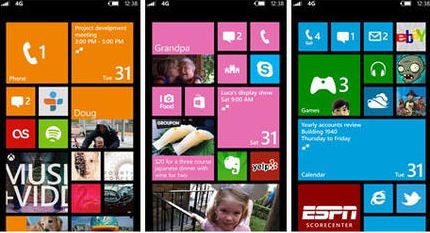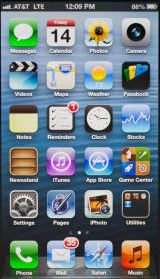The opportunity Microsoft (NAS: MSFT) offers investors in search of growth and income isn't new. Microsoft has consistently underperformed relative to its rivals, and investors have shied away in droves as a result. The past six months, the stock price appreciation Apple (NAS: AAPL) , IBM (NYS: IBM) , and Oracle (NAS: ORCL) shareholders, among others, have enjoyed are like salt in the wounds of Microsoft owners.
Some believe it's too early to declare that Microsoft is definitively back in all its former glory, but it's time even the most negative of naysayers start taking notice. The reasons are many: The first release of a full-blown update to its stale Windows OS, the opportunity Microsoft's new OS presents in the smartphone arena, its initial foray into producing tablet computers, and new cloud computing wins are the latest reasons for optimism.
What it all means
In a recent interview with the Wall Street Journal, CEO Steve Ballmer was his usual, unbecoming self. When asked about early sales numbers of Microsoft's new Surface tablet, Ballmer stated, "Numerically there's not really much that's interesting to report. If you were to call the retailers, they would say, 'Hey, off to a very good start.' We're out of stock a lot of places on touch [screen] machines." Um, thanks. Microsoft bears would quickly suggest that's another way of saying, "Things aren't going well." But if you follow Microsoft, you know that's vintage Ballmer.
There is some data regarding surface tablet sales results. Launch-day pre-orders of surface sold out within the first 24 hours. Also, word is delivery on at least some of the pre-orders for the new Microsoft tablets wasdelayed, but we don't know why. Microsoft had an initial run of three to five million surface tablets produced. We'll need to wait and see whether the pre-orders continued to exceed supply after the initial launch date.
The Oct. 31 announcement of a $9.8 million contract with the Environmental Protection Agency to implement its cloud solution, Microsoft Office 365, isn't going to set the world on fire. With about $75 billion in annual revenues, $10 million or so is less than a hiccup. However, the partnership with Lockheed Martin to, "Take EPA to the Cloud" is indicative of Microsoft's long-term commitment to an exploding marketplace.
There's a reason IBM and Oracle in particular have joined Microsoft in aggressively attacking the opportunity the cloud offers. According to Forrester Research, cloud computing will generate $241 billion in annual revenues by 2020. And along with Microsoft, the cloud is part of what makes IBM and Oracle solid investment opportunities both now and long term.
Windows Phone 8 is yet another chance for growth heading into 2013, and smartphone manufacturers Nokia, Samsung, and HTC will begin rolling out the new products in November -- just in time for the holidays. For iFanatics, anything that puts a dent into iPhone sales, particularly as they accounted for nearly 50% of Apple revenues in the recently announced quarter, is disconcerting. Will Apple crumble suddenly? Of course not, but serious competition in device sales with so many eggs in one basket warrants keeping an eye on.
The integration capabilities of the new Windows 8 OS products is yet another opportunity to explore as investors consider Window 8's success going forward. The revenue-generating possibilities of seamlessly tying together the functionalities of Microsoft users' smartphones, desktop, and mobile computing devices is certainly intriguing.
And now, the envelope please
After two days of interrupted trading due to Sandy, Microsoft investors wasted no time buying: It's up about 1.5% at the open. In my opinion, yes, the new product releases and continued commitment to burgeoning technologies is the impetus for a slow but steady change in investor sentiment, and rightfully so. This should be the first of many increases in Microsoft share prices in the mid to long term.
Why? Because Microsoft is (again) becoming a force in the world of innovative computing solutions, and the timing couldn't be better if you want price appreciation and like the sound of a 3.2% dividend yield.
It's been a frustrating path for Microsoft investors, who've watched their company fail to capitalize on the incredible growth in mobile over the past decade. However, that's changed, and the company is looking to make a splash in this booming market. In this brand-new premium report on Microsoft, our analyst explains that while the opportunity is huge, the challenges are many. He's also providing regular updates as key events occur, so make sure to claim a copy of this report now by clicking here.
Copyright © 1995 - 2012 The Motley Fool, LLC. All rights reserved. The Motley Fool has a disclosure policy.








 s very likely coming to an end. Apple needs a new innovation homerun, and perhaps Cook sees Scott Forstall and his collection of issues noted earlier as a roadblock to hitting that innovation homerun.Â
s very likely coming to an end. Apple needs a new innovation homerun, and perhaps Cook sees Scott Forstall and his collection of issues noted earlier as a roadblock to hitting that innovation homerun. 